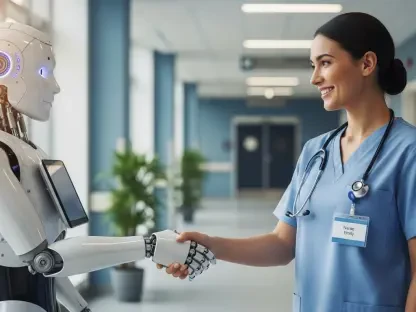In recent years, the field of orthodontics has witnessed an extraordinary transformation driven by technological advancements. Artificial intelligence (AI) and 3D printing are spearheading these changes, offering improved patient care, streamlined clinical operations, and enhanced treatment outcomes. This article delves into how these technologies are revolutionizing orthodontics, particularly through the initiatives of Align Technology, and explores their far-reaching impacts on dental care.
Artificial Intelligence: Enhancing Precision and Personalization
Personalized Treatment Algorithms
Artificial intelligence has brought unprecedented precision to orthodontic treatment plans. Leveraging vast datasets, AI systems can create highly personalized treatment algorithms tailored to individual patient needs. Align Technology’s use of anonymized data in their research and development has allowed for the customization and refinement of these treatment plans, significantly improving patient outcomes. This approach has elevated patient care by making treatments more predictable and efficient, while also boosting the clinical confidence of dental professionals.
These AI-driven treatment algorithms analyze a myriad of factors, such as tooth movement patterns, bone density, and patient-specific anatomical features, to devise the most effective treatment strategies. By continuously learning and adapting from each case, AI systems can refine their recommendations, ensuring that every patient receives a uniquely optimized treatment plan. This level of personalized care not only enhances the effectiveness of orthodontic treatments but also reduces the time and costs associated with manual adjustments and corrections, making it a win-win for both patients and practitioners.
AI Integration in Dental Practices
AI’s integration into dental practices has revolutionized clinical workflows and patient care. Through advanced imaging data from intraoral scanners combined with comprehensive patient datasets, AI aids in diagnosing dental conditions, detecting pathologies, and planning precise treatments. Align Technology has developed sophisticated AI models capable of determining the fit of aligners and detecting attachments, optimizing the clinical decisions made by dentists and orthodontists. This fusion of traditional expertise with AI’s analytical power ensures better clinical outcomes and enriches patient experiences.
The incorporation of AI in dental practice extends beyond diagnostic precision; it also automates various routine tasks that typically consume valuable time for dental professionals. For instance, AI can automate the sorting and analysis of patient records, appointment scheduling, and patient follow-up procedures. By handling these administrative functions, AI allows dental practitioners to focus more on patient care and less on paperwork, thereby enhancing overall practice efficiency. Moreover, AI’s data-driven insights help in proactive patient management, enabling early intervention and reducing the risk of complications, ultimately improving the quality of dental care provided.
Align Oral Health Suite and Workflow Optimization
The introduction of the Align Oral Health Suite marks a significant leap in understanding patient needs and optimizing treatment workflows. This suite leverages AI applications to visualize potential treatment outcomes, thus facilitating informed decision-making and enhancing doctor-patient communication. By providing a visual roadmap of possible treatment scenarios, doctors and patients can engage in a more collaborative decision-making process, ensuring that the optimal treatment plan is chosen.
Additionally, the adoption of large language models in dental practices automates routine tasks, streamlining operations and enhancing practice efficiency. These models can assist dental professionals in various capacities, including drafting patient communications, generating treatment reports, and even answering common patient inquiries through AI-powered chatbots. This automation not only saves time but also ensures consistency and accuracy in administrative tasks. By integrating AI into everyday dental practice operations, the Align Oral Health Suite enables a more efficient, transparent, and patient-centered approach to orthodontic care.
Tele-dentistry: Remote Care and AI Monitoring
Bridging In-Person and At-Home Care
The advent of tele-dentistry, complemented by AI technologies, offers a hybrid approach to dental care that bridges in-person visits with at-home monitoring. Align Technology’s Invisalign Virtual Care system employs AI-driven assessments and progress tracking, integrated with doctor apps to provide seamless patient management. This blend minimizes the frequency of office visits while ensuring continuous patient care, thereby improving convenience and accessibility.
By enabling remote consultations and monitoring, tele-dentistry addresses the logistical challenges often associated with frequent clinic visits, such as time constraints and travel difficulties. Patients can now receive real-time feedback and adjustments without leaving their homes, making dental care more accessible to those in remote areas or with mobility issues. This approach not only enhances patient satisfaction but also allows dental professionals to manage a larger volume of cases more efficiently.
Future Prospects of AI in Tele-dentistry
Looking ahead, AI and tele-dentistry hold the potential to further revolutionize remote patient monitoring. Future innovations may enable real-time tracking of health indicators through AI-enhanced tools, allowing for early detection of dental issues and timely intervention from the comfort of the patient’s home. This evolution promises more effective management of oral health, offering a new level of convenience and preventative care.
As AI technologies advance, we can expect even more sophisticated features in tele-dentistry. For instance, AI could facilitate predictive analytics to foresee potential dental issues before they manifest, thereby enabling preemptive measures. Additionally, wearable devices equipped with AI could continuously monitor oral health parameters, sending alerts to both patients and their dental care providers in case of deviations from normal levels. Such advancements would make oral health management more proactive and personalized, fostering better long-term outcomes.
3D Printing: Transforming Orthodontic Manufacturing
Advanced 3D Printing Operations
3D printing technology has revolutionized the manufacturing aspect of orthodontics. Align Technology’s extensive use of 3D printing in producing customized clear aligners demonstrates the profound impact of this technology. Operating the world’s largest 3D printing facility for dental applications, Align manufactures bespoke clear aligners daily, showcasing the scalability and efficiency of 3D printing in orthodontics.
The ability to produce custom-fit aligners ensures that patients receive devices tailored to their unique dental structures, enhancing comfort and effectiveness. Furthermore, the rapid turnaround time enabled by 3D printing means that patients can begin their treatments sooner, thereby reducing the overall duration of the orthodontic process. This not only improves patient satisfaction but also accelerates the rate at which dental professionals can undertake new cases, optimizing the overall workflow in orthodontic practices.
Overcoming Challenges with AI Integration
One of the critical challenges in 3D printing is maintaining high efficiency, quality, and consistency at scale. Align addresses these challenges by incorporating AI into their production processes. AI helps in identifying potential defects and ensuring the precision of each aligner manufactured. This integration maintains the reliability of high-volume production, ensuring consistent quality in orthodontic devices.
By continuously monitoring the production line and using machine learning algorithms to detect irregularities, AI ensures that each aligner meets stringent quality standards. This combination of 3D printing and AI-driven quality control not only speeds up the manufacturing process but also minimizes waste and reduces the likelihood of errors. This ensures that patients receive high-quality aligners promptly, improving the overall treatment experience from start to finish.
Innovations in Materials and Direct 3D Printing
Recent advancements have expanded the range of materials used in 3D printing, previously limited to a few options. Align’s innovation in direct 3D printing has led to the development of the Invisalign Palatal Expander System, designed as an alternative to traditional metal expanders. This device, awaiting regulatory approval in the EU, exemplifies the potential of direct 3D printing to offer innovative, patient-friendly solutions.
The use of advanced materials in 3D printing not only expands the types of devices that can be manufactured but also enhances the durability and comfort of these orthodontic appliances. Direct 3D printing allows for greater precision in the design and production of complex dental structures, offering a higher degree of customization compared to traditional manufacturing methods. This results in devices that are not only more effective but also more aesthetically pleasing and comfortable for the patient.
Strategic Investments and Future Outlook
Investment in Advancing Technologies
Significant investments in 3D printing and AI technologies underpin the rapid advancements in orthodontic care. Align Technology’s acquisition of Cubicure GmbH signals a strategic move to enhance their direct 3D printing capabilities for polymer additive manufacturing, broadening their range of materials and customization options. These investments lay the foundation for continued innovation and personalized patient care.
These strategic investments ensure that Align Technology remains at the forefront of orthodontic innovation, continually pushing the boundaries of what is possible with AI and 3D printing. By expanding their technological capabilities, Align can develop even more advanced treatment solutions that cater to the evolving needs of patients and dental professionals alike. This commitment to innovation not only enhances their product offerings but also sets a new standard in the field of orthodontics, encouraging other industry players to adopt similar advancements.
Expanding Horizons in Dental Care
In recent years, orthodontics has experienced a remarkable shift, thanks to groundbreaking technological advancements. Artificial intelligence (AI) and 3D printing are leading the charge, transforming patient care, optimizing clinical practices, and improving treatment results. This profound change can be attributed largely to innovations from companies like Align Technology. AI enhances diagnostic accuracy and personalized treatment plans, while 3D printing facilitates the creation of custom orthodontic devices, such as clear aligners, with unprecedented precision. The integration of these advanced technologies into orthodontics not only streamlines operations but also elevates patient experiences by ensuring more accurate, quicker, and comfortable treatments. This article delves into the ways AI and 3D printing are reshaping the orthodontic landscape, offering a glimpse into the current and future states of dental care. By exploring these advancements, we can better understand how technology is setting new standards in the field and ultimately improving outcomes for patients worldwide.









